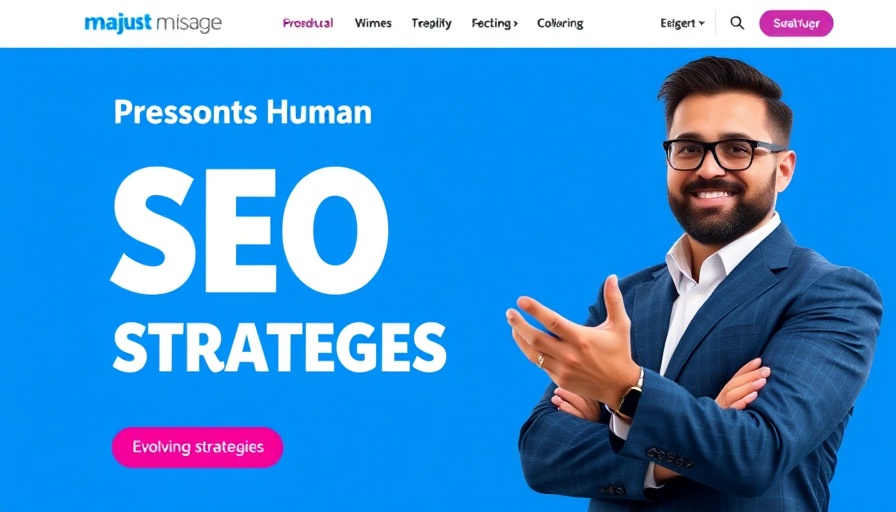
The Evolving Landscape of SEO for Small Businesses
For many small and medium-sized businesses (SMBs), the digital landscape can feel daunting. With the swift changes in search engine optimization (SEO) strategies brought about by advanced AI technologies, companies are finding themselves in a precarious position. A recent study highlighted that Google's new AI features have led to a 35% drop in click-through rates, which means businesses can no longer rely solely on traditional SEO methods to secure traffic and retain customers. In this atmosphere of uncertainty, a new approach, dubbed 'the great diversification,' is emerging as a necessary strategy for survival.
Understanding 'The Great Diversification'
Unlike the previous phase where firms focused on SEO alone, businesses are now diversifying their channels to recapture lost traffic. This shift is not merely reactive but is driven by an understanding that relying solely on organic search growth might not suffice in this new AI-dominated landscape. Companies like Seer Interactive have fallen back on the principles of building thought leadership and trust, rather than focusing solely on search rankings. As VP Alisa Scharf put it, understanding clients and creating high-quality thought leadership content can be crucial in establishing a lasting connection.
Learning from Industry Leaders
Among the companies taking pioneering steps in this diversification is Seer Interactive, which not only provides SEO services but also invests in creating valuable content aimed at building relationships with their clients. Scharf notes that while their traffic from search might not be significant, the thought leadership resulting from high-quality content has drawn reputable brands into their sphere. This illustrates a pivotal insight for SMBs: engaging in meaningful ways can sometimes lead to better results than merely focusing on quantity.
The Role of Social Media in Diversification
Businesses are also leveraging organic social platforms, particularly LinkedIn, to create valuable connections and drive high-quality traffic. This strategy has emerged as a key focal point for their marketing efforts. Seer Interactive’s experience suggests that wisdom lies not only in pursuing higher traffic numbers but in cultivating a community that trusts and engages with the brand. In an era where transparency and authenticity matter, building meaningful relationships could prove to be the differentiating factor for SMBs.
Navigating New SEO Strategies
One of the biggest challenges for companies today is navigating the cluttered SEO landscape while maintaining valuable consumer engagement. Here are some practical insights that small and medium-sized businesses can adopt:
- Invest in Quality Content: Focus on developing content that resonates with your target audience. Quality over quantity should be the mantra, as thoughtful, informative pieces can distinguish your brand amidst the rising competition.
- Leverage Multi-Channel Marketing: Don't put all your eggs in one basket; diversify channels to include social media, email marketing, and paid advertising. Each platform has unique advantages that can drive traffic and engagement.
- Engage in Thought Leadership: Establish your brand as an authority in your niche by contributing valuable insights and becoming a trusted voice. This approach nurtures brand loyalty, which is priceless during trying times.
Conclusion: Embrace Change and Diversify
The rise of AI in search functionalities calls for brands to rethink their strategies. As demonstrated by the experiences of industry leaders like Seer Interactive, proactive adjustments to SEO strategies are crucial. Small and medium-sized businesses should embrace the call for diversification, learning from these pioneers. By embracing innovative practices and prioritizing genuine engagement, they can reclaim lost traffic and thrive, despite the challenges presented by evolving search technologies. Take this moment of transition to explore new avenues and build a robust digital presence that resonates with your audience.
 Add Row
Add Row  Add
Add 



Write A Comment